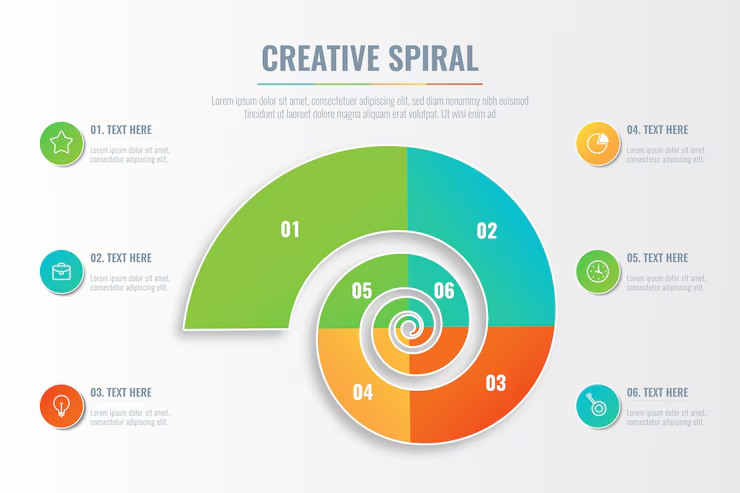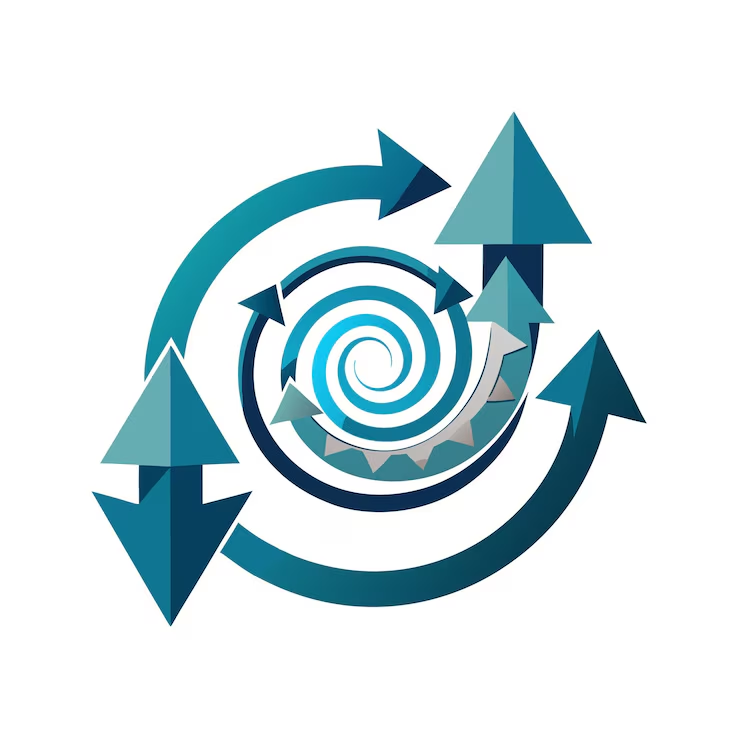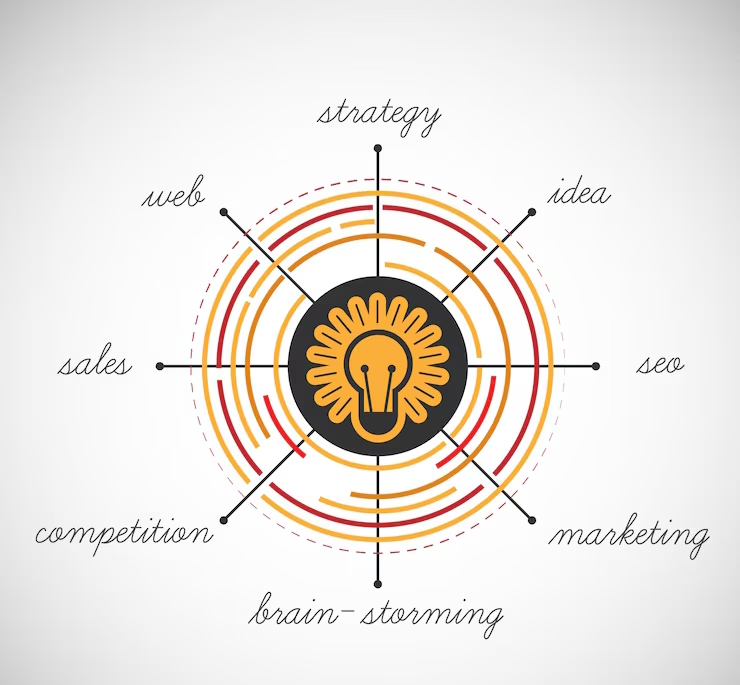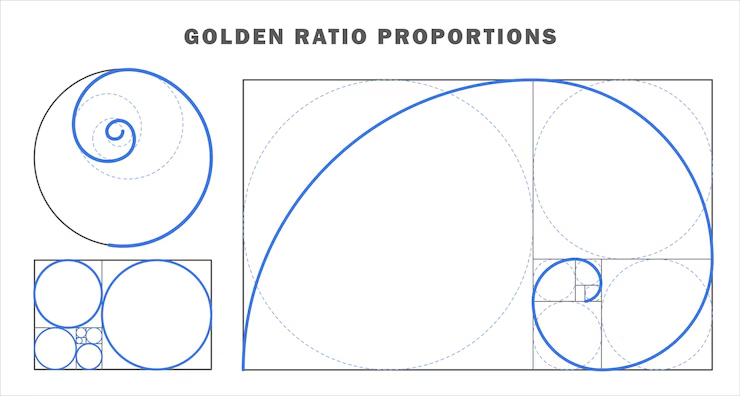What is the Spiral Model in Software Engineering?
Back in 1986, Barry Boehm came up with the spiral model, the good way of evolving to develop software. It prototyping and blends design in stages, making it one of the most flexible and adaptable approaches in the software development life cycle (SDLC). The main idea behind the spiral model is to keep risks low by continuously gathering feedback, building prototypes in iterations, and carefully evaluating progress at every step.
The spiral model works in cycles, where each loop—called a “spiral”—stands for a phase in development. With every new spiral, the software grows and gets polished until it’s ready to go. Unlike the waterfall model, which moves in a straight line from start to finish, the spiral model lets developers circle back to earlier stages as many times as needed to get things just right.
Key Characteristics:
- Iterative and incremental
- Emphasizes risk identification and mitigation
- Involves client feedback at every stage
- Promotes early and continuous refinement
Spiral Model Tutorial for Beginners
Choosing the right software development for methodology can be tricky, specially for beginners. That’s where the spiral model shines—it offers a clear but flexible way to work through projects. It helps newcomers grasp important ideas like working in cycles, involving everyone who matters, keeping good documentation, and constantly checking for risks. Most tutorials on the spiral model start by explaining the basics of the software development life cycle (SDLC). Then, they move on to practical, hands-on examples like real-world case studies, small projects, and even simulations that show how to manage risks effectively.Phases of the Spiral Model
Each round of the spiral model goes through four main phases, and these keep repeating until the project is finished:
 Planning Phase:
This is where you gather the business needs, set clear goals, figure out if the project is doable, and decide what resources you’ll need.
Planning Phase:
This is where you gather the business needs, set clear goals, figure out if the project is doable, and decide what resources you’ll need.
Spiral Model in Agile Methodology
Well, the Spiral Model is not exactly an Agile method, but they are undeniably like each other. Working in cycles, nurturing improvements, and maintaining users in the loop- actually both of them are great to suck on this. In this case, you could call the Spiral Model the somewhat more careful cousin of Agile: best used in the case of these huge, complex projects yet still trying to figure themselves out. Typically Agile is about fast sprints and teamwork. When mixed together with the risk-savvy methodologies of the Spiral Model, they make one super flexible and quick system that can at least resolve issues before they become full-blown disasters. Just right for startups and enterprises.Spiral Model Risk Management Techniques
The spiral model is best characterized as a superhero of risk management. It does not act blind to the risks but confronts them every single cycle. This is done by:- Brainstorming in groups to detect potential issues
- Conducting SWOT analysis to know what is going great and what isn't
- Making rough drafts (prototypes) in the early stages to test out the ideas
- Running simulators to estimate the potential behavior
- Create Risk-Chart to prioritize risk management; easiest first with the big things
Spiral Model in System Engineering
 The Spiral Model in System Engineering is a strong approach tailored to complex projects, highly intensive in their requirement for hardware-software integration such as Robotics and Smart Devices. Engineers follow each component of the engineering process wherein they thoroughly test them in isolation and incrementally integrated them, ensuring that all parts function together smoothly. This method helps bring out bugs and glitches pretty much early in development before the final launch, thus reducing risk and enhancing reliability of the entire system.
The Spiral Model in System Engineering is a strong approach tailored to complex projects, highly intensive in their requirement for hardware-software integration such as Robotics and Smart Devices. Engineers follow each component of the engineering process wherein they thoroughly test them in isolation and incrementally integrated them, ensuring that all parts function together smoothly. This method helps bring out bugs and glitches pretty much early in development before the final launch, thus reducing risk and enhancing reliability of the entire system.
Spiral Model in Large-Scale Software Development
The spiral model does come in handy with exceptionally large projects with several teams and moving parts like an ERP system or government software:- Basically, it allows for continuous feedback to accept late changes
- This detail in documentation keeps one in sync with matters in the project, along with this proving to be useful when audits come into play.
- Features can be shown one by one so that users soon start to see advantages.
Spiral Model in Safety-Critical Systems
The Spiral Model in System Engineering provides itself as a model for safety-critical systems because it is at work in healthcare, aerospace, and defense, where even the smallest error is a catastrophe. It's commonly used for all the components that require strict regulatory compliance, such as the FDA, DO-178C, or ISO 26262, thereby allowing the so-called iterative development and continuous risk analysis so every component can be verified and validated in a concrete manner. The intrinsic phases of prototyping, constant testing, and client feedback are crucial for building reliable systems that must not fail.Spiral Model and Software Quality Assurance
The Spiral Model in System Engineering embeds software quality assurance into every stage of the lifecycle at all points in time-in contrast to traditional development, which pushes quality assurance to the last phase: the implementation phase. Continuous code review, testing, and automated inspection of defects are results of early and continued planning, through development, by engineers to lessen rework caused by defects found later in the lifecycle. The proactive character of this context also aligns with very modern DevOps and Agile views of visiting quality not as a checkpoint but instead as an organ for constant process flow. Hence, the spiral model develops products that reduce any technical debt and ensure increased stability of products and the fact that the product meets performance, security, and usability standards from day one.Spiral Model and User-Centered Design
Spiral Model vs Other Software Models
- Prototyping Model: Both use early prototypes, but the spiral is very heavy on risk analysis and planning.
- Iterative Model: Both go into loops, but in the spiral risks play a much more formal role.
- Waterfall: Waterfall is a good-natured affair whereas spiral is bhangra-ing backward to right a wrong and refine.
- V-Model: While V strictly executes validation, Spiral is much more lenient toward exploring opportunities and also thinks ahead about potential risk.
Spiral Model as a Meta-Model
 The Spiral Model in System Engineering is flexible enough to act as a meta-model, which means it could integrate Waterfall, Agile, Prototyping, and other development methodologies into its iteration process. Depending on the actual system or project needs, engineers can customize their development process by embedding practices deemed most fitting within every spiral loop. With this hybrid facility, the spiral model suits interdisciplinary projects involving hardware and software parts.
The Spiral Model in System Engineering is flexible enough to act as a meta-model, which means it could integrate Waterfall, Agile, Prototyping, and other development methodologies into its iteration process. Depending on the actual system or project needs, engineers can customize their development process by embedding practices deemed most fitting within every spiral loop. With this hybrid facility, the spiral model suits interdisciplinary projects involving hardware and software parts.
Spiral Model Integration with Six Sigma

Spiral Model Application in Real-World Projects
Spiral model in system engineering has proven successful in real-life high-stake projects where enhanced risk management and seamless hardware-software integration are essential. It has powered mission-critical systems for NASA space missions, military communications, banking infrastructure, government portals, and hospital information systems. This model's structured but flexible approach has maintained quality and security while traversing the complexities of large-scale system engineering initiatives.Spiral Model Case Study Analysis
- To companies, the spiral model means:
- Better control over what is happening.
- Teamwork that just clicks.
- Happier users in the end.
Implementing Spiral Model in Software Projects
Want to use it? Here is how to make it work:- Involve everyone from stakeholders to developers early on.
- Involve risk experts who could sniff out trouble from their beginnings.
- Use JIRA, Confluence, and Lucidchart to keep organized.
- Keep good notes and docs.
- Test often and listen closely to feedback.
Tools Supporting Spiral Model Development
A few classics that work well with spirals:
- JIRA for project management.
- Microsoft Project for planning.
- Trello for tracking progress.
- GitHub/GitLab for code control.
- Lucidchart or Draw.io for diagrams.
- SonarQube for keeping clean and secure code.
Spiral Model Documentation Standards
Well-structured documents may be a bore, but they are what keep the team in tune and audits pain-free. Some examples of important documents include:- Business requirements.
- Technical designs.
- Risk logs.
- Test planners.
- Meeting minutes.
Advantages of the Spiral Model
- It is the best paradigm for cases where you are stepping into the unknown.
- Finds problems sooner before they become very expensive to fix.
- Adapts when circumstances change suddenly.
- Keeps users involved so that their needs are really reflected in the product.
- Greatly mission-critical projects, where failure is not an option.
- May save a bit of money in the long term by preempting costly mistakes.
Limitations of the Spiral Model
- Might be too much for super small projects.
- Ask the right kind of people who really understand risk management.
- More documents than with some models.
- Complicated if you sink through too many iterations.
- Possibility of slowing processes down through badly managed matters.
Spiral Model in Academic Curriculum
Spiral is undoubtedly a must-learn for software engineering students. It teaches how to operate around risks, cycle processes, and keep end-users front and center in all that one does-these skills will increasingly be paramount in this day and age.Spiral Model in Future Software Engineering Trends
With AI helping predict risks, cloud tools making collaboration easier, and integration with DevOps pipelines, the spiral model is evolving into the future to meet the challenges ahead.Conclusion
The spiral model is a wise plan but broadened enough to breathe. It gives you structure when you need it, but it also allows you to pivot and keep proceeding when things change—which, let's be honest, is most often in software projects. It provides users with a great way to achieve complex work while not escaping the potential creativity and quality. Whether you are just starting as a student in software development, gaining ground as a professional, or leading a team to cross big hurdles, the spiral model will give you a great advantage. It will give you proper touch on keeping things organized, mastering risk management like a pro, and equipping a piece of software that actually works-and works great.Frequently Asked Questions
1. What does the Spiral Model mean in System Engineering? A. Consider the Spiral Model as the smart, rather adaptable approach used to build complex systems, particularly those involving hardware and software. As opposed to traditional ways that rush from beginning to end in a straight line, the Spiral Model breaks this process down into a sequence of iterative loops, or "spirals." Each spiral involves planning, identifying and addressing risks, developing parts of the system, and then evaluating outputs. This looping continues till the entire system is built and delivered. It works well for larger projects that are expected to change all through, like the ones in aerospace control, robotics, or embedded systems. 2. What is the difference between the Spiral and the Waterfall model? A. Following one Waterfall Model is precisely like following a written-down recipe: you finish one step entirely and then the next. The Spiral Model is more like cooking and tasting at every step. It lets you keep going back and refining things for many iterations while you progress. This means a lot since you are not waiting until the very end to find out if something worked but are integrating the check-in and fine-tuning throughout the process itself. Much more flexibility is guaranteed here, especially when the requirements for your project may change or evolve. 3. Why is the Spiral Model best suited for safety-critical systems? A. Stakes are high whenever systems are involved with issues pertaining to life or safety, like in the case of aircraft, hospitals, or systems related to defence. The key feature of the Spiral Model is that it is concerned mostly with identifying requirements and risks as early as possible through infinite loop testing against safety standards like ISO 26262 or DO-178C, and with every iteration through the spiral, the system becomes more secure and reliable. Basically, Spiral Models should be able to identify problem areas and withdraw or reduce these from the system before they bloom into "real" failures, economically or safety-wise. 4. Can the Spiral Model be used with other development methods? A. Definitely! That's what the Spiral Model is actually for. It is best known for its versatility concerning the arrangement within which the rest proceeds. It goes on to adopt elements from agile, scrum, waterfall, or prototyping methods. For instance, one spiral can be agile-based to quickly prototype and provide feedback while the other may go by the waterfall methodology for thorough testing. Therefore, the Spiral Model is certainly well-organized for teams that need such flexibility addressing different needs and workflows at various stages of the project. 5. What are Spiral Model applications in the real world? A. The Spiral Model is being used on the most complex and the most critical systems after having been used hardly anywhere else. NASA uses it for the spacecraft control software, which is crucial where consideration to risk management is ongoing. The military uses it on communication and defense systems. The banks use it to secure their online platforms, and the hospitals use it in the development of a high-reliability patient monitoring system. In every case, the Spiral Model supports the teams in staying organized, managing risks, and delivering trustworthy software. Read our another articles:Software Development: A Complete Guide for Beginners to Professionals search jobs here














